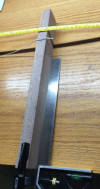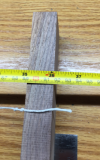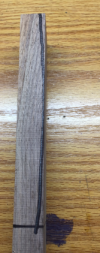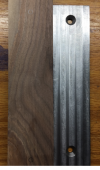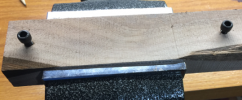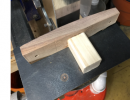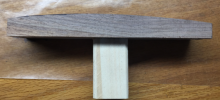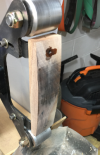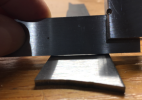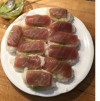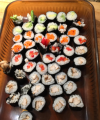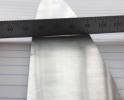all right - lets see how this goes:
2" wide piece of black walnut, fixtured perpendicular to the edge of the bench, and positioned 36" from the left side of the bench.
View attachment 1493584
the string is clamped right at the left side of the table .... and when stretched, the rightmost knot tied in the string is at the right side of the wood:
View attachment 1493586
put pencil at location of that right knot, and trace out the arc (if you look closely you will see a finer centerline on that black marker which is the pencil mark itself:
View attachment 1493588
locate the holes using the existing platen as a template:
View attachment 1493589
drill and tap to 1/4" - 20 threads (this side will be the back of the platen):
View attachment 1493591
there is a trick (I think mentioned here before) of taking a tapped hole in wood, and soaking the threads with thin CA that I learned while making radio controlled model airplanes. makes those wood threads *really* hard. not done yet .... but will do so before I finish up.
Thats all for today .... gotta get evening chores around the house done and dinner cooked....

